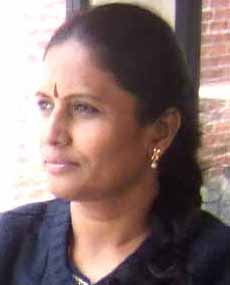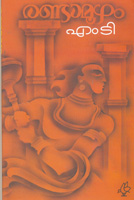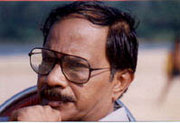|
பதிவுகள்
|

பதிவுகள் சஞ்சிகை உலகின் பல்வேறு நாடுகள் பலவற்றில்
வாழும் தமிழ் மக்களால் வாசிக்கப்பட்டு வருகிறது. உங்கள் வியாபாரத்தை
சர்வதேசமயமாக்க பதிவுகளில் விளம்பரம் செய்யுங்கள். நியாயமான விளம்பரக் கட்டணம்.
விபரங்களுக்கு ngiri2704@rogers.com
என்னும் மின்னஞ்சல் முகவரிக்கு எழுதுங்கள்.
பதிவுகளில் வெளியாகும் விளம்பரங்களுக்கு
விளம்பரதாரர்களே பொறுப்பு. பதிவுகள் எந்த வகையிலும் பொறுப்பு அல்ல. வெளியாகும்
ஆக்கங்களை அனைத்துக்கும் அவற்றை ஆக்கியவர்களே பொறுப்பு. பதிவுகளல்ல. அவற்றில்
தெரிவிக்கப்படும் கருத்துகள் பதிவுகளின்கருத்துகளாக இருக்க வேண்டுமென்பதில்லை.
|
|
கடன் தருவோம்! |
|

நீங்கள் கனடாவில் வசிப்பவரா? உங்களுக்கு 'மோர்ட்கேஜ்' வசதிகள் இலகுவாகச் செய்து தர வேண்டுமா? கவலையை விடுங்கள். யாமிருக்கப் பயமேன்! விபரங்களுக்கு
இங்கே அழுத்துங்கள்
|
|
மணமக்கள்! |
|
|
|
தமிழர் சரித்திரம்
|
|
 சுவாமி ஞானப்பிரகாசரின் யாழ்ப்பாண வைபவ விமரிசனம்(ஆங்கிலத்தில்)|முதலியார் இராசநாயகத்தின்)|மயில்லவாகனப் புலவரின் யாழ்ப்பாண வைபவமாலை|மட்டக்களப்பு இந்து ஆலயம்|ஸ்ரீனிவாச ஐயங்காரின் தமிழர் சரித்திரம்|தென்னிந்தியாவின் ஆலய நகரங்கள்| சுவாமி ஞானப்பிரகாசரின் யாழ்ப்பாண வைபவ விமரிசனம்(ஆங்கிலத்தில்)|முதலியார் இராசநாயகத்தின்)|மயில்லவாகனப் புலவரின் யாழ்ப்பாண வைபவமாலை|மட்டக்களப்பு இந்து ஆலயம்|ஸ்ரீனிவாச ஐயங்காரின் தமிழர் சரித்திரம்|தென்னிந்தியாவின் ஆலய நகரங்கள்| |

|

|
தமிழ்
எழுத்தாளர்களே!..
|
|
அன்பான
இணைய வாசகர்களே! 'பதிவுகள்' பற்றிய உங்கள் கருத்துகளை வரவேற்கின்றோம். தாராளமாக எழுதி
அனுப்புங்கள். 'பதிவுகளின் வெற்றி உங்கள் ஆதரவிலேயே தங்கியுள்ளது. உங்கள் கருத்துகள் ப் பகுதியில்
இணைய வாசகர்கள் நன்மை கருதி பிரசுரிக்கப்படும். பதிவுகளிற்கு ஆக்கங்கள் அனுப்ப விரும்புவர்கள்
யூனிகோட் தமிழ்
எழுத்தைப் பாவித்து மின்னஞ்சல் editor@pathivukal.com
மூலம் அனுப்பி வைக்கவும். தபால் மூலம் வரும் ஆக்கங்கள் ஏற்றுக் கொள்ளப் படமாட்டாதென்பதை வருத்தத்துடன்
தெரிவித்துக் கொள்கின்றோம். மேலும் பதிவுக'ளிற்கு ஆக்கங்கள் அனுப்புவோர் தங்களது சரியான மின்னஞ்சல்
முகவரியினைக் குறிப்பிட்டு அனுப்ப வேண்டும். முகவரி பிழையாகவிருக்கும் பட்சத்தில் ஆக்கங்கள் பிரசுரத்திற்கு
ஏற்றுக் கொள்ளப் படமாட்டாதென்பதை அறியத் தருகின்றோம். 'பதிவுக'ளின் நோக்கங்களிலொன்று இணையத்தமிழை
வளர்ப்பது. தமிழ் எழுத்துகளைப் பாவித்துப் படைப்புகளை பதிவு செய்து மின்னஞ்சல் மூலம் அனுப்புவது அதற்கு
முதற்படிதான். அதே சமயம் அவ்வாறு அனுப்புவதன் மூலம் கணிணியின் பயனை, இணையத்தின் பயனை அனுப்புவர்
மட்டுமல்ல ஆசிரியரும் அடைந்து கொள்ள முடிகின்றது. 'பதிவுக'ளின் நிகழ்வுகள் பகுதியில் தங்களது
அமைப்புகள் அல்லது சங்கங்களின் விழாக்கள் போன்ற விபரங்களைப் பதிவு செய்து கொள்ள விரும்புகின்றவர்கள்
மின்னஞ்சல் மூலம் அல்லது மேற்குறிப்பிடப்பட்ட முகவரிக்குக் கடிதங்கள் எழுதுவதன் மூலம் பதிவு செய்து கொள்ளலாம். |
|
Download Tamil Font
|

|
|
|
Literature! |
Voices of the voiceless: A study of the female characters of
M. T. Vasudevan Nair’s Randamoozham through its translated version Second Turn.
- R. Dharani, Lecturer, Department of English, PSG College of Arts &
Science, Coimbatore -
“Their silence is the silence of the centuries as to how life was, is, for
most humanity. Silences result from ‘Circumstances’ of being born into the wrong
class, race or sex, being denied education, becoming numbed by economic
struggle, muzzled by censorship or distracted or impeded by the demands of
nurturing.” (Fishkin and Hedges, ‘Listening to silences’, 5)
 The
patriarchal system of order and organization predetermined its own existence
through the marginalisation and subsequent exclusion of feminist voices. Taboos
and sanctions which operated around virginity, menstruation and childbirth
helped to maintain gender divisions by physically confining or marking off women
from the social space. Moreover, many social/cultural functions, connected
exclusively with the female body, enabled the patriarchal society to perpetuate
a concrete division between the genders. Thus, even symbolic attempts by women
to resist ‘commoditization’ were not tolerated in a patriarchal society, such as
the one that existed during the period of the Mahabharata. The
patriarchal system of order and organization predetermined its own existence
through the marginalisation and subsequent exclusion of feminist voices. Taboos
and sanctions which operated around virginity, menstruation and childbirth
helped to maintain gender divisions by physically confining or marking off women
from the social space. Moreover, many social/cultural functions, connected
exclusively with the female body, enabled the patriarchal society to perpetuate
a concrete division between the genders. Thus, even symbolic attempts by women
to resist ‘commoditization’ were not tolerated in a patriarchal society, such as
the one that existed during the period of the Mahabharata.
The official discourse of the Mahabharata attained a totalizing effect, as any
official discourse would over a period of time, when it attempted to sweep
dissenting voices under a carpet of silence. It is interesting to see how MT,
the twentieth century author, distances himself from the totalising discourse of
the original and tries to highlight an essentially contemporary critique. MT
exploits the poly semantic possibilities of the original to find out new
horizons of meaning. The original is seen as a vehicle of expression, which
harboured a depth of meaning, which was neither apparent nor adequately
presented and for the author the eloquent silences of the original provide ample
testimony to this contention.
The paper aims at presenting how Randamoozham offers a critique of ancient
Indian society where male domination persisted with degrees of variation and
discrimination against women. MT addresses one of the main concerns of feminism
—marginalization of women in patriarchal societies — through the women
characters of Randamoozham. The novel gives the reader a picture of the role and
status of women in the prehistoric society. The women in the fiction generate
various dualities. The novelist adopts a critical examination of Indian heritage
in the novel, contextualizing the Mahabharata myths against the realities of the
twentieth century.
 The
novel proceeds through the memory lane of the protagonist Bhima, from whose view
MT examines the various impediments encountered by women in their life – the
oppressed position, lack of freedom and denial of power. Women are the objects
to be possessed by the men and ‘all Kaurava men have delighted in the tears of
women’ (p.no.28, ‘Second Turn). The novel illuminates the predicament of the
women characters – their feelings, responses, attitudes and attributes only
through the male protagonist. Draupadi, the wife of the Pandavas and Kunti, the
mother of the Pandavas are the two major female characters in the text that
represent two role-models of women in the archaic, oppressive, patriarchal set
up. The catastrophe of these chief characters underlines the bonding in pain
irrespective of the causes of their marginalisation in the novel. MT has used
the postmodernist strategy in articulating female subjectivity that is split and
fragmented by the authoritative forces of a parochial society. MT is speaking
through Bhima, the male protagonist as to why are the women characters relegated The
novel proceeds through the memory lane of the protagonist Bhima, from whose view
MT examines the various impediments encountered by women in their life – the
oppressed position, lack of freedom and denial of power. Women are the objects
to be possessed by the men and ‘all Kaurava men have delighted in the tears of
women’ (p.no.28, ‘Second Turn). The novel illuminates the predicament of the
women characters – their feelings, responses, attitudes and attributes only
through the male protagonist. Draupadi, the wife of the Pandavas and Kunti, the
mother of the Pandavas are the two major female characters in the text that
represent two role-models of women in the archaic, oppressive, patriarchal set
up. The catastrophe of these chief characters underlines the bonding in pain
irrespective of the causes of their marginalisation in the novel. MT has used
the postmodernist strategy in articulating female subjectivity that is split and
fragmented by the authoritative forces of a parochial society. MT is speaking
through Bhima, the male protagonist as to why are the women characters relegated
to the periphery.
Draupadi, being the daughter of King Draupada, in a glorious moment of triumph,
garlands Arjuna in her swayamvara. When she is taken to his
house, the mother Kunti orders Arjuna to share and enjoy ‘it’ among them.
Polyandry is insisted upon Draupadi without any consideration of her
likes and dislikes. However, men convince themselves by saying that they always
worship women. From the view of the protagonist, “Aunt Kanthari was bought for a
price for a blind man’s sake. Even though it was known that the king Pandu could
not beget children, Madri was sold to him as his second wife by Salya for gold
and jewels” (p.no.91, ‘Second Turn).
 MT
steadfastly views the disadvantageous position of Draupadi among the other
characters who has to retain a relational bondage between her existence confined
within conjugal frames and the different forms of oppression perpetuated on her.
A closer scrutiny of the character would trace the concept that she displays a
determination to face the riddles of life boldly. She is very intelligent,
dynamic and to some extent a staunch advocate of women’s rights. At the court of
Kaurava, when she is humiliated by the Kaurava men, her silent suffering edges
on despair, humiliation, pain and anger. She has to suffer dual humiliation –
mentally as well as physically. However, she confronts the situation very
bravely. She bursts out violently, questioning the courtiers ‘how can someone
who is himself enslaved, pawn someone else?’ (p.no. 126, ‘Second Turn’). In a
way, she gives voice to an entire maternal ancestry often silenced by family and
culture and symbolises the plight of most of the modern women who bear sorrows,
blows and pains inflicted by men. She is very much aware of the fact that no man
would be ready to hear the voice of her as she is a pawn and she has no right to
speak. Being a woman of intense strength and courage, she protests against the
set-up, which the Kauravas have imposed on her. She refuses to be the slave of
the men in the court. She gets freedom not only for her, but also for her
husbands who stand as slaves in the court. MT
steadfastly views the disadvantageous position of Draupadi among the other
characters who has to retain a relational bondage between her existence confined
within conjugal frames and the different forms of oppression perpetuated on her.
A closer scrutiny of the character would trace the concept that she displays a
determination to face the riddles of life boldly. She is very intelligent,
dynamic and to some extent a staunch advocate of women’s rights. At the court of
Kaurava, when she is humiliated by the Kaurava men, her silent suffering edges
on despair, humiliation, pain and anger. She has to suffer dual humiliation –
mentally as well as physically. However, she confronts the situation very
bravely. She bursts out violently, questioning the courtiers ‘how can someone
who is himself enslaved, pawn someone else?’ (p.no. 126, ‘Second Turn’). In a
way, she gives voice to an entire maternal ancestry often silenced by family and
culture and symbolises the plight of most of the modern women who bear sorrows,
blows and pains inflicted by men. She is very much aware of the fact that no man
would be ready to hear the voice of her as she is a pawn and she has no right to
speak. Being a woman of intense strength and courage, she protests against the
set-up, which the Kauravas have imposed on her. She refuses to be the slave of
the men in the court. She gets freedom not only for her, but also for her
husbands who stand as slaves in the court.
She does no want to be a woman who is destined to play a subordinate role, which
deprives her of her individuality, of her free will, of her basic human rights
and freedom. She protests vehemently against the cruelty of the men in the court
by saying that she is not a slave to anyone in the court even to her husbands.
She expresses that her husband cannot pawn her, as she is not an object to be
possessed by Yudhistra. Draupadi is the primal Shakti for the Kurukshetra War in
which she wants to satiate herself with Dusshasana and Duryodhana’s flesh and to
braid her hair. While Yudhistra is talking of a kind compromise instead of war,
she sternly reflects that she has taken care not to extinguish the fire in her
by her tears and she orders her husbands to exterminate all the Kauravas. To
Bhima, she appears to be ‘Kritya’, a productive deity who is worshipped in
rituals of witchcraft. He wonders “I thought Draupadi was now standing like
kritya, with the seeds of curse in her hands and sparks of destruction in her
eyes” (p.no. 188, ‘Second Turn’).
She is depicted as an embodiment of dualism – a constructive as well as
destructive energy in the novel. The protagonist is falling a prey to Draupadi’s
traits in many occasions. Even as a wife, it is the sheer bodily power of Bhima,
evidenced in his victory over the giants Jarasandha and Keechaka that turn
Draupadi on. Bhima has to recall his daring encounters with giants to change
Draupadi from ‘an enchantress into a lioness’ during their times of love-making.
Her plea to fetch ‘Saugandhika’, the rare and divine flower she fancied, sets
out Bhima t pluck the bloom from Kubera’s garden, after several adventures. But
she doesn’t recognise the valiant deed of Bhima for her and she seems to have
forgotten everything about the flower when she comes with Yudhistra later in the
morning. Bhima is admonished by his elder brother for his recklessness. Instead
of admiring the beauty of the blue lotus flowers, Draupadi abandons the bunch of
flowers offered by Bhima.
Later, when Draupadi has a mad desire to see the top of a mountain, Bhima goes
to the top of the mountain and chases away the demons. But she changes her mind
after seeing the return of Arjuna from his long ‘Yatra’. She shows more interest
in listening to Arjuna’s accounts of travels than to accompany Bhima to the
mountain. The pains taken by Bhima go unnoticed by Draupadi. The same night,
when Bhima goes to her place, she seems to be murmuring of the adventures of
Arjuna in her sleep. The dejected Bhima thinks, “ I didn’t need her cold body
when her mind was filled with dreams of Arjuna” (p.no. 154, ‘Second Turn’).
MT’s representation of Draupadi’s ‘woman in action’ aspect is conclusively
established at the end of the novel in the stance Draupadi manipulates
destructively the chance of Bhima becoming the king. She becomes the
personification of the duality of the human condition, the duality of being both
victim and perpetrator of devastative violence.
MT launches an elaborate investigation into how Bhima is being victimized by the
two vital forces of his life – his wife and his mother. His mother Kunti who is
as significant and influential as Draupadi is an unquestioning victim of the
pressures from the male around her. She is made suppressive by the egotistic
male chauvinism of the ancient society. MT’s portrayal of Kunti reinforces the
traditional concept of docile wives and submissive woman. Unlike Draupadi, she
never poses the questions of her self-identity.
Being the adopted daughter to the king KuntiBhojan, she is brought to Hastinapur
as a bride to an impotent king. The duty of bringing heirs to
the throne is forced upon her and she emerges out successfully in accomplishing
this duty. Even her sons are astounded by her hidden
secrets. At this juncture, it is a mistake to see Kunti’s position as belittling
women in a simplistic way. Indeed, just as it is today, women’s marginality in a
male-dominated world can indicate not their helplessness, but their pent-up
power. Being married to an incapable king, she has made her whole life as a
sacrifice as ‘her
sighs hang heavily over the palace’ (p.no. 28, ‘Second Turn’). Her chastity is
laughed at by the children of Kaurava family. They ridicule that kunti has
narrated stories about the parentage of Pandavas like Yudhistra from Dharma,
Bhima from Vayu and Arjuna from Indira. Women in those days had been evaluated
negatively in such a way that the protagonist speculates thus “ Oh, sages! The
things you say about women! The womb waiting to receive the seed, waiting to be
planted and what else! You have not seen this woman. My mother!” (p.no.94,
‘Second Turn’). The power of the Pandavas rests with the silent female – the
mother who is ground upon which all the battles are fought.
She is an unpredictable character - goddesslike, kind and motherly, at the same
time capricious and cruel too. She is an amalgamation of both
altruistic and egocentric traits. She wants her sons to escape from the danger
of being burnt in the wax castle and she goes to the extent of
leaving an innocent lady with her five sons as scapegoats in the castle in the
place of her sons. Her cruelty, at that situation is not digested
by her own sons. In the same way, being aware of her sons’ love and lust for
Draupadi, she covertly orders them to share and enjoy her.
Through out the novel, her female psyche is configured and reconfigured by her
sons. Kunti as woman is the source of all conflicts in the novel, but she
herself is apparently not willingly engaged in any of them. She is an indirect
cause for the war, which made Hastinapur a country of widows. Her eldest son
Yudhistra deprecates his mother saying, “ That woman is responsible for all this
destruction” (p.no.237, ‘Second Turn’).
Other minor women characters like ‘Kantari, Hidumbi, Balandarai and subatra’
appear to be splintered and marginalized. They assume the traditional position
of the obedient Indian wives who surrender themselves totally for the advantages
of their husbands and children. But their submissive acceptance fetch them no
rewards. They are used and misused by their own spouses. They are the shadows of
powerlessness and their frailty is the main cause for their suffering.
The characters which are very familiar to readers from Vyasa’s ‘Mahabharata’
have been recreated unusually by MT, who says in his preface, “I
have read between Vyasa’s lines and expanded his pregnant silences” (Preface,
‘Second Turn’). MT’s work also provides us a way of thinking
about literature and history which does not presuppose the coherence of literary
works. Most importantly, perhaps, it problematizes the relation
between a text and its predecessor.
1. Ravindranath P.K. ‘Second Turn’ ( Translated from the Malyalam
original RandaMoozham by M.T.Vasudevan Nair) Macmillan India Ltd.
Chennai, 1997.
2. Velan Kurinji ‘Irandam Idam’’ ( Translated from the Malyalam
original RandaMoozham by M.T.Vasudevan Nair) Sahitya
Academy, New Delhi, 2000.
3. Fishkin, Shelley Fisher, and Elaine Hedges, eds. Listening to Silences : New
essays in Feminist Criticism. Oxford : Oxford University Press, 1994.
4. Vendler, Helen, “Feminism and Literature” New York Review of Books 31 May
1990. |
|
©
காப்புரிமை 2000-2007 Pathivukal.COM
முகப்பு||Disclaimer|வ.ந,கிரிதரன்
|

|
| |
|

